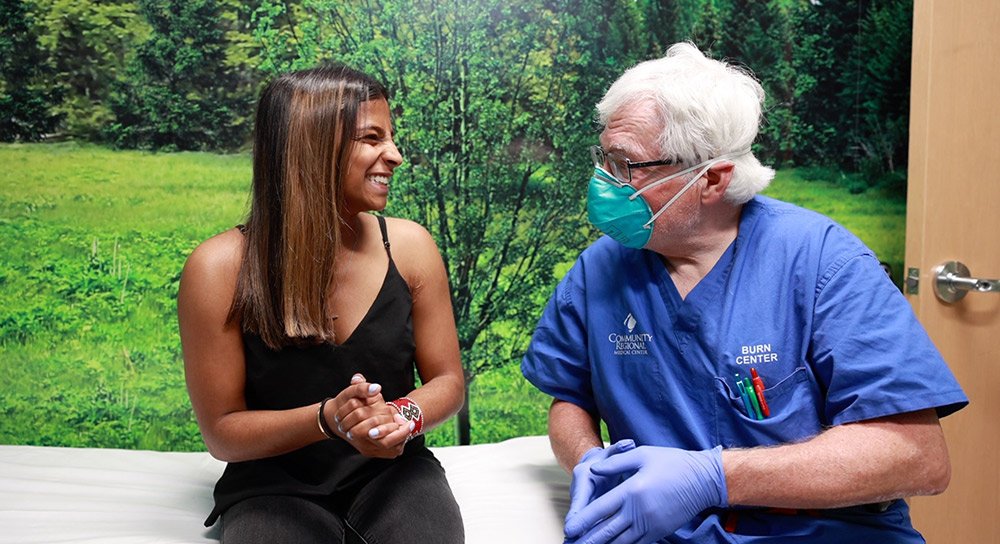A special kind of teamwork and visits by clinicians to patients’ homes is helping to keep those with chronic lung problems out of the hospital.

That’s no small task in Fresno County where one in five people have asthma and even more have chronic lung diseases. Exacerbated by air pollution levels that are among the highest in the country, emergency departments at Community Medical Centers’ hospitals and elsewhere see dozens of people daily in respiratory distress. Sometimes the home visits turn up easy fixes that make big differences, said D. Richard Allison, a nurse practioner with Community Regional Medical Center’s Chronic Lung Disease Program.
One women kept showing up for appointments short of breath with dangerously low oxygen levels, when the Allison and his team visited her home they realized she wasn’t using her oxygen tank. “The distributor had been dropping off tanks at her home for two years and she didn’t know how to use them,” Allison said. So the team taught her how and when to use her oxygen tank and put up a list of medications with pictures and easy-to-follow directions right where she sees it every day. Now she’s breathing easier.
Among the more than 400 patients helped so far by the Chronic Lung Disease Program, emergency department visits were reduced 79% and hospitalizations were reduced 65%, saving an estimated $1.17 million a year on hospital care. An estimated $35 million is spent in Fresno County annually on hospital costs for those with asthma, according to Central California Asthma Collaborative.

During home visits, staff tests pulmonary function, checks for proper inhaler and medication use and assesses psychosocial needs. “We also test the ambient air in their homes to look for asthma triggers,” such as pets, mold in a swamp cooler, or proximity to highways and dusty farm fields, said Pulmonologist Vipul Jain, associate professor with UCSF and medical director for the program. “It makes patients feel special that we came to their home.”
Sandra Beck, an asthma educator who is part of the home visits team said most home visits start with a quick tour and asking patients where they keep their medications. Then they start asking other casual questions. “We had one man with obstructive lung disease who was showing up in the emergency room every two weeks,” described Beck. “When we asked what his hobbies were, he said he liked to refinish furniture and we found he had been sanding and varnishing in a very small apartment. He also didn’t buy into the idea of taking asthma medication on the days when he wasn’t feeling sick.”
Having the man open his window more often, vacuum sawdust up immediately and teaching him that some medication actually helped prevent asthma attacks helped reduce his trips to the ER. Allison said often issues can be resolved by teaching and enlisting family members to oversee administering asthma prevention medications especially in immigrant families. “Sometimes it seems simple, but getting heating and air conditioning ducts cleaned or having them move out of a rental home with old drapes and carpeting is beyond many of our patients with limited incomes,” said Allison.
Right now the team, which also includes a social worker and often an interpreter, only has the time and resources to make home visits one day a week. Dr. Jain said he’s looking for additional funding to help more patients stay out of the hospital.
Erin Kennedy reported this story. Reach her at MedWatchToday@communitymedical.org




.jpg)
